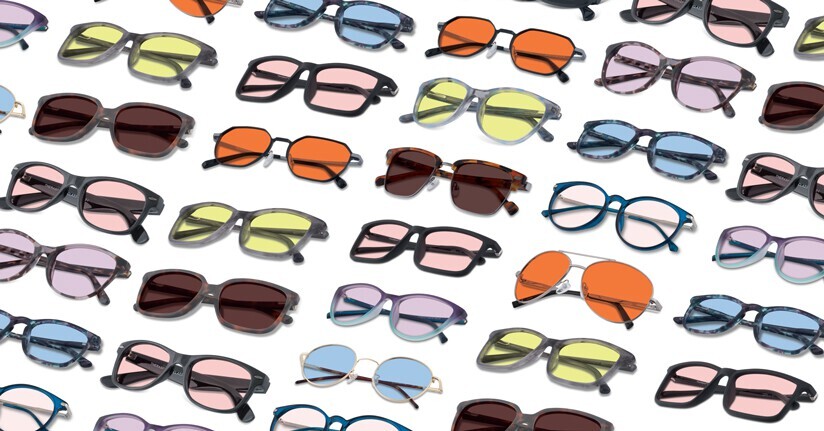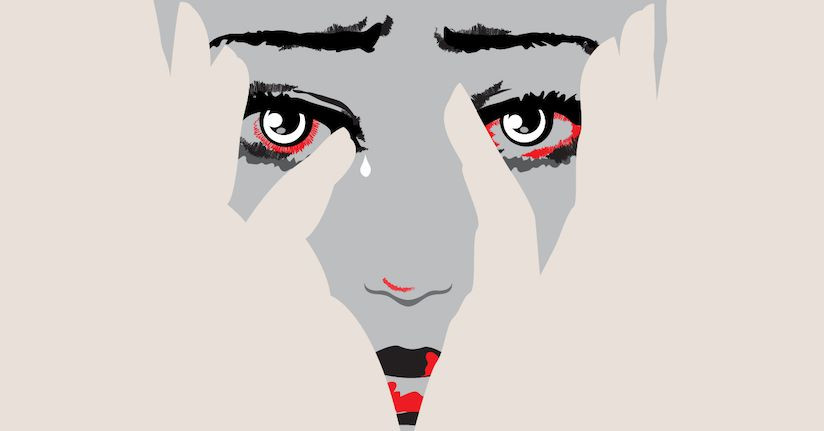Blepharospasm and Light Sensitivity: Top Questions and Answers
Every year, roughly 2,000 patients are diagnosed with the rare disorder known as benign essential blepharospasm. Involuntary eyelid muscle spasms predominantly characterize this condition, but light sensitivity and photophobia also play a prominent role in the experience. We answer some of the top questions about how issues with light affect patients.
Is benign essential blepharospasm a neurological disorder?
Benign essential blepharospasm falls under a class of neurological movement disorders called dystonia. These disorders represent a hyper-reactive functioning of a part of the brain that controls various bodily movements, including the muscles around the eye. Since the brain at its core is responsible for blepharospasm symptoms, it makes sense that photophobia—which is also a neurological issue—equally impacts the condition.
In particular, blepharospasm has been linked to dysfunction within the trigeminal nerve as well as elevated activity in the thalamus. Both of these are suspected biological explanations for photophobia and have been explored in clinical research.1,2
How prominent is light sensitivity a symptom of blepharospasm?
It has been suggested that more than 80% of people with blepharospasm are sensitive to light, and in fact it may be even higher.3,4 This is comparable with other common neurological diseases, notably migraine and other primary headache disorders. This leads to specific light-sensitive symptoms specific to blepharospasm, such as:
- Avoidance of or intolerance to light
- Photo-oculodynia or light-triggered eye pain
- "Central dazzle" or the feeling that light is uncomfortably bright
- Increased blinking and spasm rate
Of course, other complaints such as headache, inability to fully open one’s eyes and eye strain may also develop.
In addition, more than two-thirds of all patients have stated that their photophobia is at its peak during symptomatic periods. One notable exception is children with blepharospasm, who appear to have less sensitivity to light than adults (although no less disabling for those young patients who do experience it).5
Does bright light trigger spasms and symptoms of blepharospasm?
YES! Unfortunately, light can act as a direct stimulus for spasms and other symptoms of the condition. Not only is photophobia correlated with abnormal activity in the brain, but evidence repeatedly shows that blepharospasm patients have reduced tolerances to bright light—similar to those with migraine, post-concussion syndrome and other neurological disorders.3 Fewer patients report that light is a trigger for symptoms than those who simply experience light-related discomfort during a spasm, but it still affects between 25 to 81 percent.4,6 Some of the most problematic sources of light are fluorescents, computer and device screens and sunlight.
Can patients be highly photophobic during spasm-free periods?
With a lower threshold for light, there is not much relief in between spasms either. At least half of individuals have photophobia in the absence of other blepharospasm symptoms, and even more believe that any intense lighting is uncomfortable during these periods. As noted previously, children seem to experience light-sensitive reactions between attacks at a far lower rate than adults.3,4 Regardless, it is a crucial part of the patient journey that must be taken into account. (You can read more about pediatric light sensitivity here)
Are dry eyes a side effect of blepharospasm, and do they lead to photophobia?
Dry eye symptoms are a regular complication of blepharospasm, specifically affecting tear production and drainage. Although data tends to be more anecdotal, the fact is the vast majority of patients believe it is a significant problem. And dry eye has long been established as one of the top causes of painful light sensitivity. This is likely due to the same trigeminal sensitization that occurs with dry eye as it does with blepharospasm-related photophobia.1,7
How does sensitivity to light impact blepharospasm patients?
When even non-bright sources are deemed painful, it is understandable that blepharospasm patients find severe limitations in their lives. From wearing sunglasses indoors to combat their light sensitivity to extensive struggles in their personal and professional lives, the symptom can lead to major disruptions when present. A few of the activities that are negatively impacted include:4
- Reading
- Watching television and movies
- Shopping in malls, grocery stores
- Housework
- Professional obligations
- Driving
These findings are consistent with our own independent survey of other brain- and sensory-affected conditions, including migraine and fibromyalgia. The unfortunate reality is photophobia keeps many people in the dark...literally.
Can FL-41 glasses improve blepharospasm light sensitivity?
In addition to botox injections as a general treatment, proven relief for blepharospasm-related light sensitivity comes from FL-41 eyewear. While other lenses have increased total light tolerance for individuals, more than 70% actually preferred the photophobia relief of the FL-41 tint. Patients felt improvement in fluorescent light sensitivity, severity and frequency of spasms, and involuntary blinking—all after wearing for as little as two weeks.3,8 These specialty-tinted glasses also helped them participate more in the activities that had been previously limited.

Glasses tinted with FL-41 block wavelengths of visible light in the blue spectrum; as a result, experts believe that their effectiveness for blepharospasm support these specific wavelengths as being primary factors in triggering and aggravating symptoms. Thus, brightness alone may not be the only consideration, but the actual colors of light being emitted as well.
Moreover, studies have shown that those with migraine also are sensitive to this type of light and have found FL-41 glasses a positive intervention for their sensory processing. With numerous shared neurological processes between the two conditions, it offers a possible explanation for why the lenses provide such meaningful relief.
As an example, here’s how TheraSpecs customer Milana described the improvement for her grandmother:
"[My grandma] is an active old lady who loves to take walks and work around the house, but because of this disease her eyelids would involuntarily close, and she would not have control over opening them, meaning that she could no longer go anywhere alone. TheraSpecs FL-41 glasses have changed her life for the better! She wears them both indoors and outdoors and her eyelids have not closed once since we got the glasses. She was even able to go to the store alone, and take a three hour walk with my mom!"
If you are dealing with light-sensitive blepharospasm, we would encourage to see how TheraSpecs can help improve your life.
References:
1Hallett M, Evinger C, Jankovic J, Stacy M; BEBRF International Workshop. Update on blepharospasm: report from the BEBRF International Workshop. Neurology. 2008;71(16):1275–1282. doi:10.1212/01.wnl.0000327601.46315.85
2Valls-Sole J, Defazio G. Blepharospasm: Update on Epidemiology, Clinical Aspects, and Pathophysiology. Front Neurol. 2016;7:45. Published 2016 Mar 31. doi:10.3389/fneur.2016.00045
3Herz NL, Yen MT. Modulation of sensory photophobia in essential blepharospasm with chromatic lenses. Ophthalmology. 2005 Dec;112(12):2208-11. Epub 2005 Oct 19.
4Judd RA, Digre KB, Warner JE, et al. Shedding light on blepharospasm: a patient-researcher partnership approach to assessment of photophobia and impact on activities of daily living. Neuroophthalmology. 2007;31:49–54
5Kinard K, Miller NR, Digre KB, Katz BJ, Crum AV, Warner JE. Blepharospasm in children and adolescents. Childs Nerv Syst. 2016 Feb;32(2):355-8. doi: 10.1007/s00381-015-2938-5. Epub 2015 Oct 28.
6Peckham EL, Lopez G, Shamim EA, et al. Clinical features of patients with blepharospasm: a report of 240 patients. Eur J Neurol. 2011;18(3):382–386. doi:10.1111/j.1468-1331.2010.03161.x
7Park DI, Shin HM, Lee SY, Lew H. Tear production and drainage after botulinum toxin A injection in patients with essential blepharospasm. Acta Ophthalmol. 2013 Mar;91(2):e108-12. doi: 10.1111/aos.12002.
8Blackburn MK, Lamb RD, Digre KB, et al. FL-41 tint improves blink frequency, light sensitivity, and functional limitations in patients with benign essential blepharospasm. Ophthalmology. 2009;116(5):997–1001. doi:10.1016/j.ophtha.2008.12.031

TheraSpecs® Glasses for Light Sensitivity
Find the glasses that fit your needs and lifestyle, and stay protected from screens, fluorescents, unwanted blue light, sunlight, flashing lights, and more.
Shop Now



